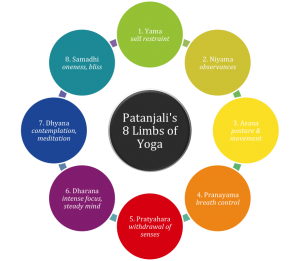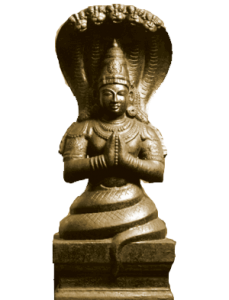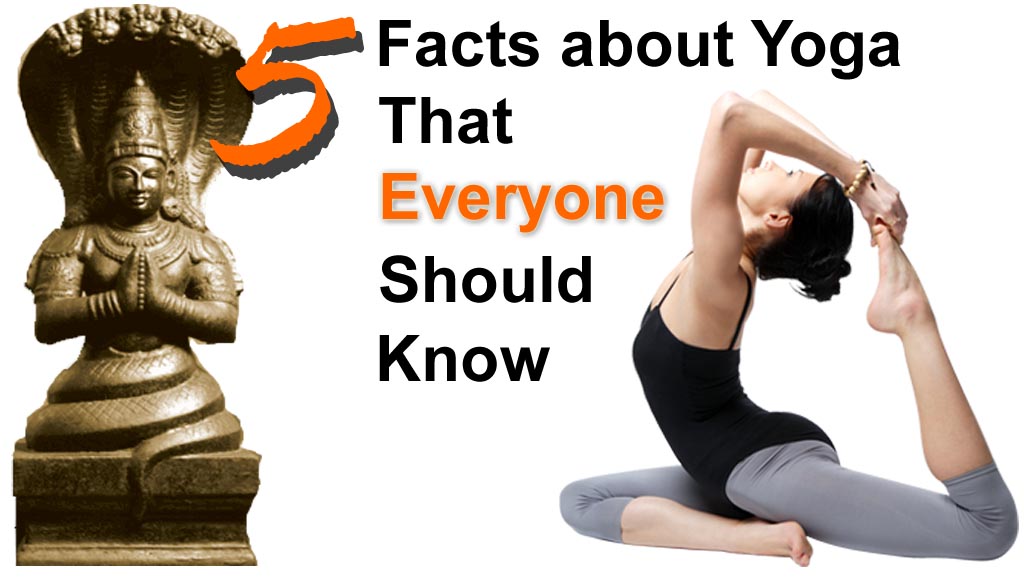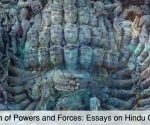Now that Yoga Day is Over, Let us Understand What Yoga Really is
1. Yoga is not just Postures
Asana is just one of the 8 limbs (ashta: eight, anga: limbs) of the science of Yoga. This has been stressed enough by most people and many of us have heard of this by now. The 8 limbs of Yoga just to recap are:
 Yama: The first limb, yama, deals with one’s ethical standards and sense of integrity. The five yamas are: Ahimsa: nonviolence, Satya: truthfulness, Asteya: nonstealing, Brahmacharya: continence, Aparigraha: noncovetousness
Yama: The first limb, yama, deals with one’s ethical standards and sense of integrity. The five yamas are: Ahimsa: nonviolence, Satya: truthfulness, Asteya: nonstealing, Brahmacharya: continence, Aparigraha: noncovetousness- Niyama: Niyama, the second limb, has to do with self-discipline and spiritual observances. The five niyamas are: Saucha: cleanliness, Samtosa: contentment, Tapas: heat; spiritual austerities, Svadhyaya: study of the sacred scriptures and of one’s self, Isvara pranidhana: surrender to God
- Asana: Asanas, the postures practiced in yoga, comprise the third limb.
- Pranayama: Generally translated as breath control the literal translation of pranayama is “life force extension”
- Pratyahara: Pratyahara, the fifth limb, means withdrawal or sensory transcendence.
- Dharana: Dharana, or the practice of concentration, which precedes meditation, is where we learn how to slow down the thinking process by concentrating on a single mental object
- Dhyana: Meditation or contemplation, the seventh stage of ashtanga, is the uninterrupted flow of awareness.
- Samadhi: Patanjali describes this eighth and final stage of ashtanga, samadhi where the meditator merges with his or her point of focus and transcends the Self altogether.
2. Yoga is HINDU from beginning to the end
The purpose of Yoga is enlightenment or Samadhi or reaching the source (Sama: Same, Aadhi: Source). Other effects such as health, peace of mind, advanced miraculous powers, wealth etc are secondary. Patanjali is very clear about this as his book on Yoga begins with Samadhi Pada – the chapter on Samadhi. Saying Yoga is not Hindu is like saying that Muhammed is not Muslim or Jesus is not Christian. It is absurd.
Yoga literally means Union. Yoga is a means to unite your body, your mind and ultimately your higher self, the source – Samadhi
3. Patanjali is the father of Yoga. But it’s origins are much older
 Patanjali is the author of Patanjali’s Yoga Sutras – or aphorisms on Yoga which is the authority on Yoga. Numerous other texts including Shiva’s Agamas, Yoga Kundalini Upanishad and other Yogoupanishads, Geranda Samhita, Hata Yoga Pradipika etc. describe the authentic practices and experiences of Yoga. But Patanjali’s Yoga Sutras are the most concise, complete and authoritative work on Yoga. If your Yoga teacher does not refer to these books, it is perhaps time that they learnt them and you insisted on references to them so you know you are learning real yoga.
Patanjali is the author of Patanjali’s Yoga Sutras – or aphorisms on Yoga which is the authority on Yoga. Numerous other texts including Shiva’s Agamas, Yoga Kundalini Upanishad and other Yogoupanishads, Geranda Samhita, Hata Yoga Pradipika etc. describe the authentic practices and experiences of Yoga. But Patanjali’s Yoga Sutras are the most concise, complete and authoritative work on Yoga. If your Yoga teacher does not refer to these books, it is perhaps time that they learnt them and you insisted on references to them so you know you are learning real yoga.
Patanjali, the father of yoga, is typically depicted in the form of a snake as shown on the left to indicate the power of the Kundalini – which is your dormant cosmic energy – that moves through your body through the inter-twined channels of the ida and pingala in your spine like a snake with the practice of Yoga.
4. Yoga has eight parts not eight steps as many people think
All 8 parts need to be practiced simultaneously. Most people (at least those who are aware that Yoga is more than just Asanas) think that each step precedes the previous. But this makes the practice stressful and actually impossible. You cannot for instance achieve Satya (truthfulness) without going deep into Pratyahara, Dhyana and even Samadhi. Each step takes you deeper into the others and ultimately to enlightenment. Even Samadhi is not a end point but a part of the process. That is why Yoga must be learnt from a master who is in Samadhi and can transmit that to you.
5. Miraculous powers – Siddhis – are a vital part of Yoga
Yoga is not just a feel good exercise. Patanajali clearly mentions that the practice of Yoga can and should bring you extraordinary powers or Siddhis. These are obtained by performing Samyama – which is Dharana, Dhyana and Samadhi together – on the various objects and forms and achieving oneness – Advaita – with them. Patanjali talks about the following powers and more..
- Knowledge of the past, present and future – intuition and more
- Knowledge of others’ minds
- Becoming invisible
- Knowledge of the time of death
- Knowing things are are hidden and things that are remote
- Cessation of hunger
- Walking on water
- Becoming light and Flying through the skies
- Becoming immovable and so on..
Though he says that these powers are not to be used for purposes other than enlightenment.
The experience of these powers is vital to show that you are practicing real Yoga
… and not just bending your body.










